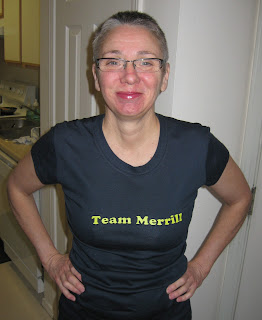The barista asks me if I’d like a straw and a few chocolate-covered coffee beans with my drink. “No thanks, I’m a purist,” I reply, as I shell out 3 bucks and take my tall-single-whole-milk-macchiato in a go cup with a nice cardboard collar to protect my sensitive fingers. I catch myself in the absurdity as I drive away. My dad, a black coffee drinker till the day he died, would laugh at my definition of coffee purist. It’s a relative term.
When I say Roger is doing great, I mean it with all sincerity. But I see his health and energy level relative to what it was six weeks ago when he was in the hospital. If you were to see him today, you’d see a thin, bald man, looking a bit the worse for wear. If you saw him outside our apartment, he would be wearing his HEPA filter mask and gloves. Because I’ve said he’s doing great, you might be shocked or even disappointed at the way he looks. Have faith! He will eventually look like the familiar Roger that we know and love.
He is, in fact, doing great for having had a bone marrow transplant just 68 days ago. His blood counts are holding steady, he’s gaining a little weight back, he’s getting some exercise every day, he can see well enough to read again, his voice is strong, he doesn’t need to take naps any more. He feels much better, if still not entirely well. Things are on the upswing. I think I may have even spotted a few wisps of hair growing back.
Like my lazy use of the word “purist,” “great” is another relative term that I toss around freely. But, honestly, after everything we’ve been through, I can’t believe that we’ve come this far. Great seems pretty good to me.
--Candi
--Candi




































